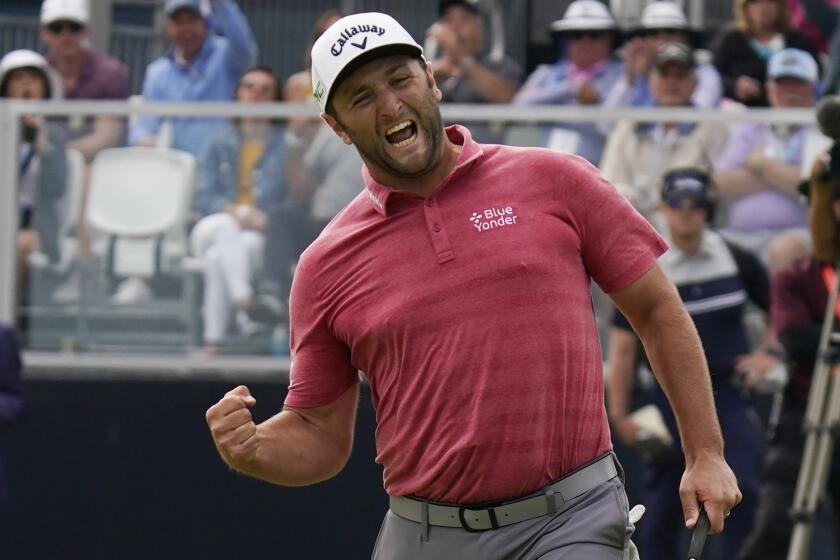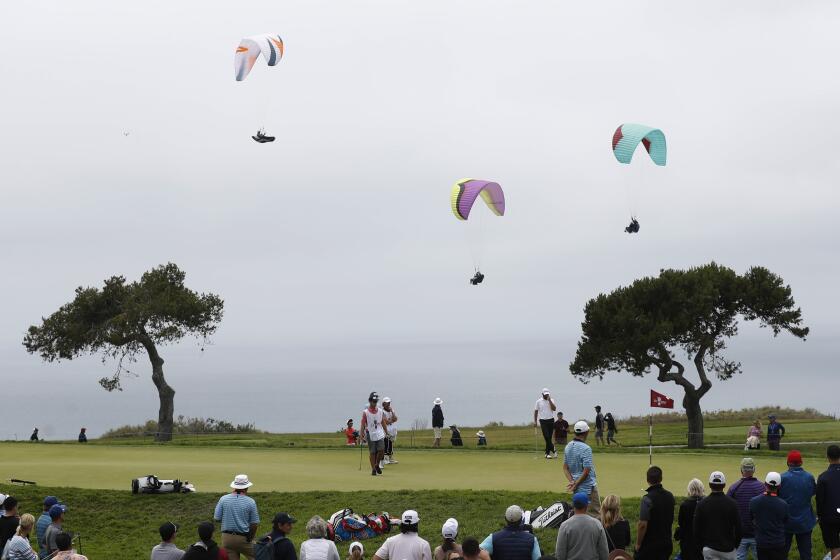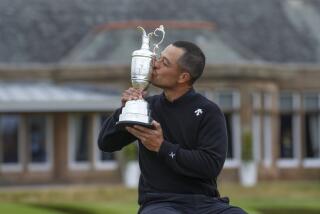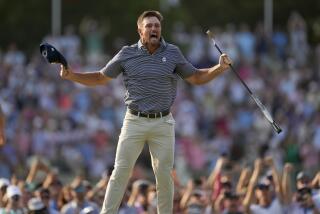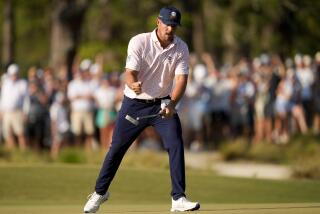Louis Oosthuizen left frustrated by his sixth runner-up finish at a major
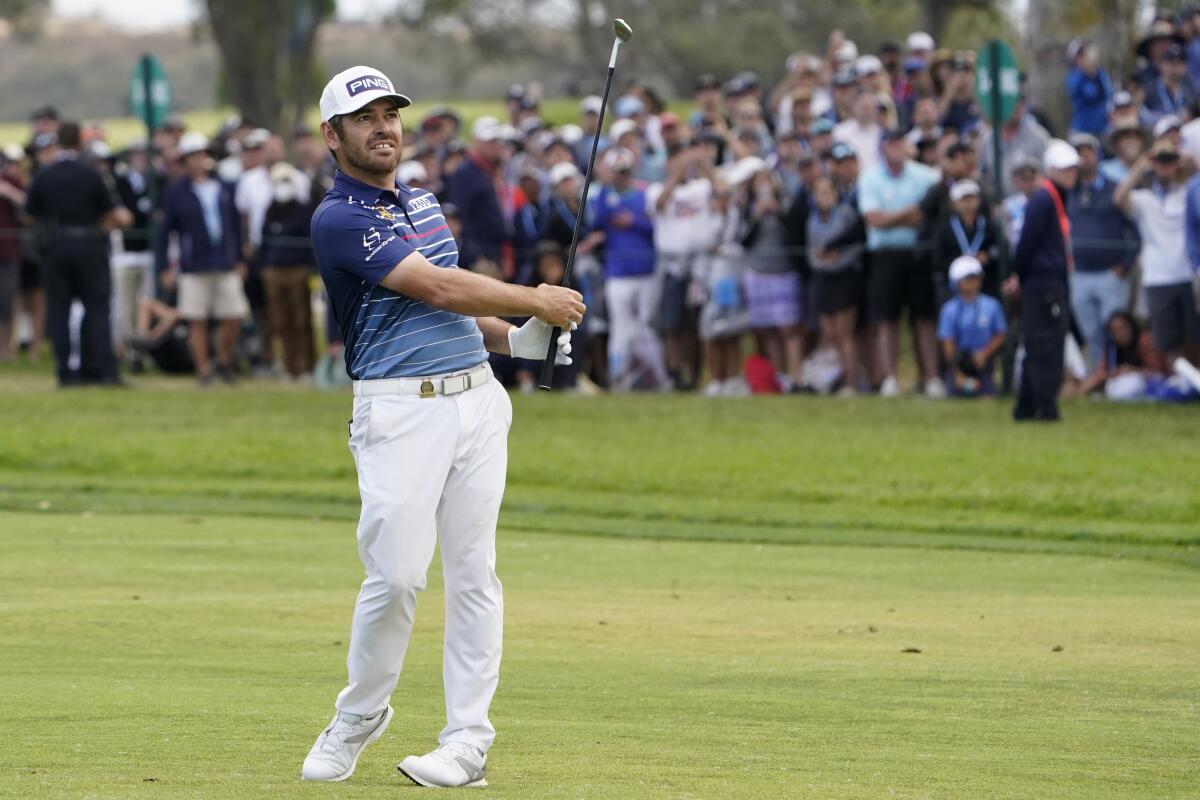
- Share via
SAN DIEGO — Louis Oosthuizen tried to make history.
Instead, he came face to face with his own past.
No U.S. Open champion has ever eagled the 72nd hole, but that’s what Oosthuizen needed to do Sunday to tie Jon Rahm and force a playoff. It wasn’t out of the question, as it was the easiest finishing hole in U.S. Open history, and Oosthuizen had gone birdie, birdie, eagle on it in his previous three rounds.
But it was not to be. He hit his drive in the left rough, had to play it safe on his second shot instead of trying to clear the pond in front of the green, and failed to hole out from 69 yards on his do-or-die attempt for a miracle. That he made the birdie putt turned out to be irrelevant.
So for the sixth time, he finished runner-up in a major championship. Phil Mickelson (11) and Tiger Woods (seven) are the only active players to have more second-place finishes on the biggest stage.
Jon Rahm won the U.S. Open on Sunday, shooting a final-round 67 at Torrey Pines Golf Course in San Diego to capture his first major championship.
“I didn’t win it,” said Oosthuizen, winner of the 2010 British Open at St. Andrews. “I’m second again. No, look, it’s frustrating. It’s disappointing. I’m playing good golf, but it’s not — winning a major championship is not just going to happen. You need to go out and play good golf. I played good today, but I didn’t play good enough.”
On a day when Rahm became the first Spaniard to win this storied tournament, Oosthuizen was looking to join Gary Player, Ernie Els and Retief Goosen as the only South Africans to do so.
He and Rahm were the lone survivors down the stretch, despite a jaw-dropping logjam just a few hours earlier when 10 players were either leading or within one shot of the lead.
The meltdowns were strange and sometimes spectacular. Defending champion Bryson DeChambeau, who led for part of the day and went 34 holes without a bogey, saw his round come apart on the back nine when he shot a 44 that included a quadruple-bogey eight on No. 17.
“I didn’t get off the rails at all. It’s golf,” DeChambeau said. “People will say I did this or did that, and it’s just golf. I’ve had plenty of times where I hit it way worse than today and I won. It’s just one of those things where I didn’t have the right breaks happen at the right time.”
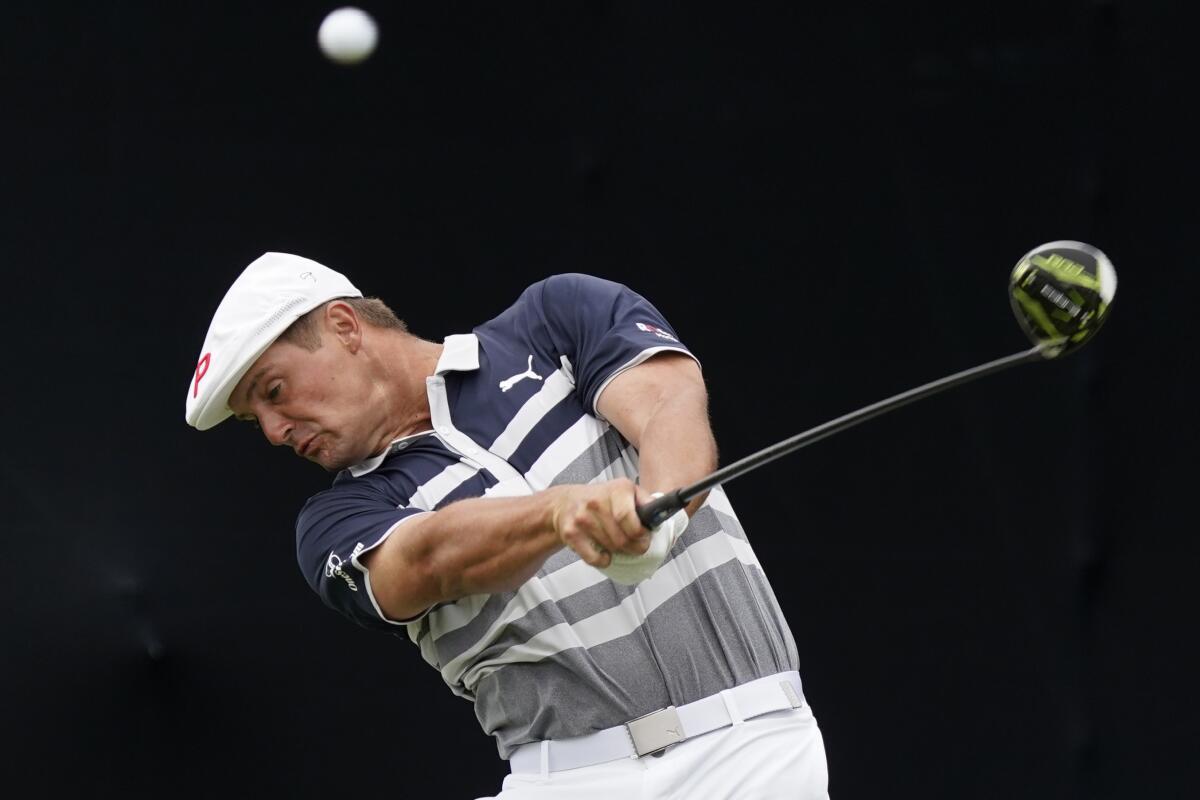
Canada’s Mackenzie Hughes, playing in the final group of a major for the first time, hooked his tee shot on the par-3 11th hole. The ball clipped a tree, ricocheted off on the cart path, and bounced back into the same tree, lodging in the branches. That led to a double-bogey and knocked him out of contention.
Rory McIlroy, seven years removed from his last major championship victory, began the day two shots off the lead, and made it interesting until going bogey, double-bogey on 11 and 12, slipping back down the leaderboard.
“I put up a good fight,” McIlroy said. “I started the round well today. With the three-putt on 11, that sort of stopped the momentum, and then I got a little unlucky on 12 and made double from there. Take those two holes out, the rest of the week was really good.”
Collin Morikawa hovered around the top, as did Brooks Koepka, but neither could sustain that momentum down the stretch.
With a gliderport next to golf course, paragliders can spend hours hovering at U.S. Open. “The gliders are part of the landscape,” says Rory McIlroy.
After Rahm made his birdie putt on 18 — joining Ben Hogan, Jack Nicklaus and Tom Watson as the only U.S. Open champions to finish birdie-birdie — it was up to Oosthuizen to erase the one-shot deficit and catch him.
The pivotal error for the South African came on No. 17, when, despite acres of room to the right, he hit his drive into the penalty area on the left. The way he had envisioned the hole was a safe drive, a sand wedge and a makeable birdie putt. Instead, he had to take a drop, and wound up with a bogey — setting the stage for desperation on 18.
“I knew it was a crucial hole for me to take it on and give myself a birdie opportunity,” he said of 17. “I didn’t pull it off, but standing on that tee again, I’ll probably do the same thing, taking a driver and taking the shot on.
“I feel like I had my shots, I went for it, and that’s what you have to do to win majors. Sometimes it goes your way, and other times it doesn’t.”
He’s gotten painfully familiar with the latter.
More to Read
Go beyond the scoreboard
Get the latest on L.A.'s teams in the daily Sports Report newsletter.
You may occasionally receive promotional content from the Los Angeles Times.

